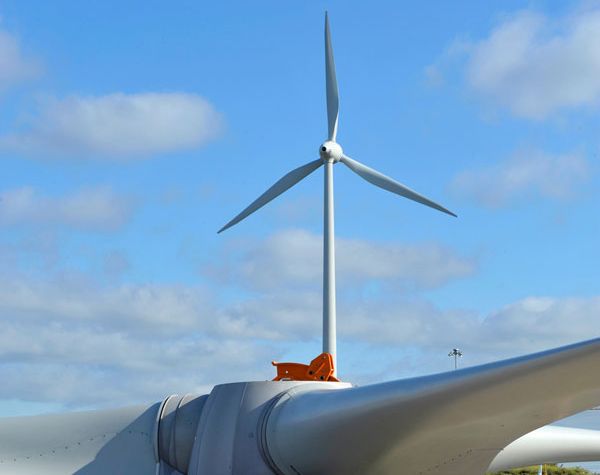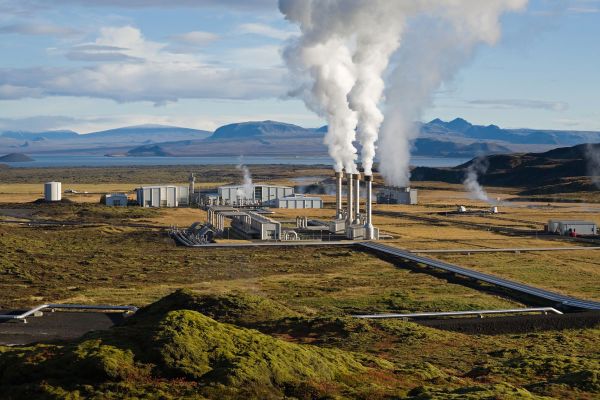
The world is pursuing the holy grail of renewable energy to reduce dependence on fossil fuels. Many large corporations are beginning to install solar modules on their roof tops or investing in other renewable energy projects. The one problem with renewable energy has always been that the power output is intermittent. Solar cells, for obvious reasons, work only in the day time and the power output can vary depending on the time of day, the weather conditions and other such factors. The same is true of wind energy. The wind velocity varies with seasons, there are gusts and lulls in wind flow and so on. For this reason of intermittent availability of renewable energy, there is always the need for back-up utility power or for energy storage by batteries.
This scenario could soon change with the advent of some new approaches to integrating renewable energy sources intelligently with the grid. .
1. Intelligent demand response
EnerNOC is the Boston, Massachusetts based leader in intelligent energy management systems. It has deployed its suit of energy management software at over 10,000 installations in North America and the UK. These installations include supermarkets, commercial buildings, universities, government facilities and the like. Each of these sites is connected to EnerNOC’s Network Operations Center. The Op Center continuously monitors energy demand and supply to these installations. When there is a surge in demand, indicated by falling frequency or voltage in the supply, the network ops center directs its clients to reduce demand by switching off air conditioning or reducing lighting or starting up stand-by generators. This real time demand management helps utilities prevent power outages. It also helps them to avoid keeping a “spinning reserve” of power generation on-line. The utilities pay a rebate to EnerNOC and its customers for this demand management service.
EnerNOC has now started work to adapt this energy management system to optimize the integration of wind energy production with the grid of a Northwestern power transmission company. As the output from wind generation fluctuates, the EnerNOC demand management system will signal the transmission company to ramp up or reduce its own energy supply to maintain grid stability. This technology is expected to save investment in energy storage battery systems to handle fluctuations in wind energy output.
2. Micro-inverters and Maximum Power point Trackers
Solar photo voltaic panels produce direct current that needs to be changed into alternating current using an electronic power inverter. In conventional solar power installations, each of the modules is connected to a single inverter that is connected to the grid. This has the problem that the failure of a single module will take down the whole system. Also the reduction of power output from a single solar panel would cause the entire system to shut down. Even a passing cloud over the solar installation would cause major output fluctuation.
The Micro inverter solves this problem by building in small inverters to the back of each solar module so that each module is individually connected to the grid. In systems where these have been deployed, an increase in power output of over 20% has been recorded. The only disadvantage is the much higher cost of Micro inverters compared with the larger single inverter installation.
A companion electronic product for use with solar arrays is the Maximum Power Point Tracker (MPPT). Solar modules differ from each other due manufacturing tolerances and consequently the operating voltage at which it delivers maximum power varies. When a solar power installation is connected to a single inverter, all the solar modules are required to deliver power at a common voltage. With the fitment of MPPT’s to each module, the power output from each module is maximized for an overall increase in power output.
3. Wind Power Management
Logica, of Portugal has deployed its RMS (Renewable Energy Management System) to control over 3 GW of wind power generation for the company EDP Renewable. The RMS system connects individual wind turbines to a central control and operations center and deploys a SCADA system (Supervisory Control and Data Acquisition System) to monitor each wind turbine on a 24X7 basis. Some 200 to 300 signals are received from each turbine on its operating parameters. The RMS system can remotely switch-on or switch-off each wind turbine or even the complete wind farm. It can trend output and performance problems of wind turbines irrespective of the supplier and help the operator in planned outages for maintenance.
The Logica system is a supply management system as different from a demand management system such as that of EnerNOC.
4. The Virtual Power Plant
One of the problems with integrating renewable energy plants into an electric supply grid has been that each plant has comparatively low power output compared with the fossil fuel plants that are several orders of magnitude bigger. In an experiment named the Regenerative Combined Power plant in Germany, led by Enercon, this problem has been addressed by combining multiple renewable energy plants spread around Germany into a single virtual power plant.
The project combined three wind farms with a total power generation capacity of 12.6 MW with twenty Solar PV plants with a capacity of 5.5 MW and four bio-gas power plants of 4 MW capacity. A 1 MW pumped storage power plant was added to make this a good size 23 MW renewable energy facility. By using centralized controls, each of these individual renewable power plants could be started up or backed down responding to energy demand in the grid.
The satisfactory operation of this central control experiment promises that this could be the technology for integrating small renewable energy plants into the grid.
5. The Hybrid Power Plant
Florida Power and Light (FPL) and other utilities around the world are beginning to combine solar power into their fossil fuel power plants to create what may be termed Hybrid Power plants. The approach by FPL is to use solar concentrators to pre-heat water. In a recently completed 75 MW power plant, FPL has deployed some 190,000 mirrors, called heliostats, to reflect the sun’s rays on to a boiler to produce steam. This steam supplements the steam produced by the gas turbine combined cycle plant to increase power output. The savings for FPL over a 30 year projected plant life is $ 178 million in fuel costs besides the benefit to society of avoidance of some 2.5 million tones of greenhouse gases.




